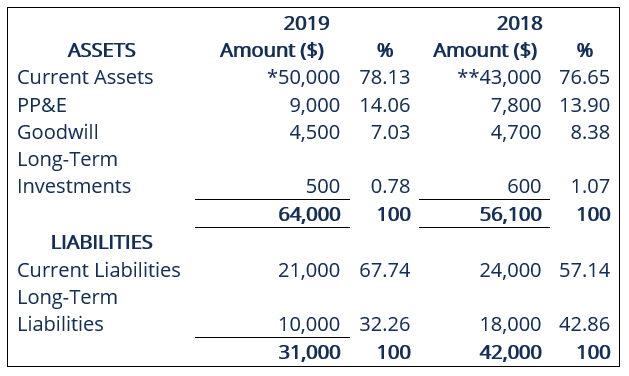Last updated on May 30th, 2023 at 06:39 pm

Author: Sarthak Bhalerao
Table of Contents
What is Vertical Analysis?
Vertical analysis is an accounting tool that enables proportional analysis of financial statements. While performing a vertical analysis, every line item on a financial statement is entered as a percentage of another item. For example, on an income statement, every line item is stated in terms of the percentage of gross sales. Similarly, on a balance sheet, every entry is made not in terms of absolute currency but as a percentage of the total assets. This helps in representing every cash outflow or inflow relative to its total cash inflows.
The vertical analysis makes it easier to compare the financial statements of one company with another. This is because one can see the relative proportions of the account balances. Vertical analysis is used within a financial statement for a single reporting period. The vertical analysis makes it easier to compare previous periods for time series analysis. Vertical analysis helps the accountant to ascertain the relative proportions of the balances of each account.
Advantages of Vertical Analysis
- Vertical analysis simplifies the correlation between single items on a balance sheet and the bottom line, as they are expressed in a percentage. The company’s management can use these percentages to set goals and threshold limits. For example, the management may consider shutting down a particular unit if the profit per unit falls below a particular threshold percentage.
- Vertical analysis is a more potent tool than horizontal analysis.
- Vertical analysis is also very useful in comparing a company’s financial statements to the trends in the industry.
- It is highly effective when comparing two or more companies operating in the same industry but having different market capitalizations. It is often very tricky to compare the balance sheets of a company that is valued at 1 billion dollars with a company that is valued at $500,000. The vertical analysis enables accountants to create common size measures that enable them to compare and contrast amounts of different magnitude in a very efficient manner.
A comparative Balance sheet with Vertical Analysis



